- AddressG21b, The Pier, Pier Point Road, Cairns QLD 4870 Australia
 Photo by: The Raw Photo
Photo by: The Raw Photo
Nepal, the land of the Himalayas and home to the world’s highest mountain, Everest, calls hundreds of thousands of trekkers every year. Every trekker, be it a novice or seasoned trekker, has dreamed of trekking to the base camp of Everest at least once in a lifetime. It’s on the bucket list of adventurers and trekkers alike. And if not on yours, you’re seriously missing something! Well, you can start with this blog and know everything about the trek to Everest Base Camp. This blog will not only excite you for the adventure to EBC but also prepare you for it.
Why you would trek to Everest Base Camp is definitely the best question to ask yourself before actually planning for it. The best perk of the trek is its unparalleled opportunity to marvel at the world’s tallest peak up close. It’s a mesmerizing odyssey through the heart of the Himalayas, showcasing not just the grandeur of Mount Everest but also the rich Sherpa culture and breathtaking beauty of the Khumbu region. The trail to EBC lets you traverse through varying landscapes ranging from lush forests to Sherpa village and high-altitude glaciers. Beyond all these, the trek is a challenge, each step embodying determination, self-discovery, and resilience.

The extraordinary journey to Everest Base Camp starts with a thrilling flight to Lukla and progresses through diverse landscapes, rugged terrains, and Sherpa villages adorned with colorful prayer flags. The trail to EBC encompasses lush rhododendron forests, suspension bridges, deep gorges, scenic monastery, and serene valleys. The trek to EBC is physically demanding and equally rewarding.
Trekkers navigate through varying altitudes, requiring a gradual ascent to acclimatize and prevent altitude sickness. Proper gear, proper plan, and proper preparation are crucial. It’s equally important to stay hydrated, maintain a steady pace, and listen to your own body to ensure a safe and more comfortable journey. Trekkers can hire a professional guide and porter to navigate the trail, carry equipment, and assist in logistics and for cultural interaction and communication.
While the trek is a once-in-a-lifetime adventure, there are certain aspects that some trekkers might find not-so-good. Like the altitude sickness risk. Symptoms such as headaches, dizziness, and fatigue can affect trekkers as they ascend. For some trekkers, this trek is physically demanding. The journey involves long, arduous walks over rough terrain with steep ascents and descents.
The unpredictable weather condition is something that is another not-so-good thing about the EBC trek. Trekkers might encounter sudden weather changes that pose challenges and discomfort. During the peak season, the trail becomes so crowded that it strips away the solitude and tranquility of the trekkers. These all are the less favorable features of the EBC trek.

It usually takes 14 days to complete the Everest Base Camp Trek, and covers approximately 130 kilometers (80 miles). However, the duration can vary depending on your chosen route, itinerary, side trips, and trekking pace. Please note that Laboche Peak plus EBC trek takes 18 days, and the trek via 3 pass can take up to 22 days.
The trek via Gokyo Lakes and Cho La Pass can take up to 18 days.
Reaching Everest Base Camp takes approximately 8 to 10 days from Kathmandu, with descent spanning 2 to 4 days. The adventure starts with an enthralling flight to Lukla, and the trek begins, traversing various scenic spots and picturesque villages like Namche, Tengboche, and Dingboche, gradually ascending to the base camp.
The Everest Base Camp trek is a moderate graded trek with formidable yet profoundly rewarding challenge. Ascending to over 5,000 meters above sea level is definitely a challenging task. For those trekking for the first time, altitude sickness becomes a genuine concern. Its difficulty lies in steep ascents and descents, unpredictable weather conditions and high altitudes. The trek demands a moderate to high level of physical endurance and sheer determination to trek for a couple of days through rugged terrains while tacking high altitudes. The trek is ideal for experienced trekkers, but novice trekkers can do the trek as well.

Spring (March to May) and autumn (September to November) are the two prime seasons to trek to Everest Base Camp. These periods offer clear skies, balmy weather and excellent visibility of the majestic mountains. Trekkers can admire breathtaking views of iconic peaks, including Everest, Ama Dablam, Nuptse, and Lhotse.
While autumn offers cooler temperatures and cleaner air following the monsoon, making it a popular destination for hiking, spring brings flowering flowers and a somewhat milder climate. Both seasons present ideal conditions, allowing trekkers to experience breathtaking landscapes and remarkable mountain views while navigating the trails to Everest Base Camp.
If you want to reach the base camp of Everest, you must avoid altitude sickness. Despite its simple name, ‘altitude sickness’ can pose significant dangers. Acquainting oneself with the signs and perils of altitude sickness serves as the guardian of an adventurer’s journey. Prioritizing a gradual ascent is essential, allowing the body time to acclimate to higher altitudes. Staying well-hydrated by drinking plenty of water is crucial.
Adequate rest and pacing oneself during the trek are vital, avoiding overexertion and allowing the body to adjust. Recognizing the symptoms early, such as headaches, nausea, or dizziness, and taking immediate action, which might include descending to lower altitudes, is crucial for a safe and enjoyable trek. For details on altitude sickness, check this blog.
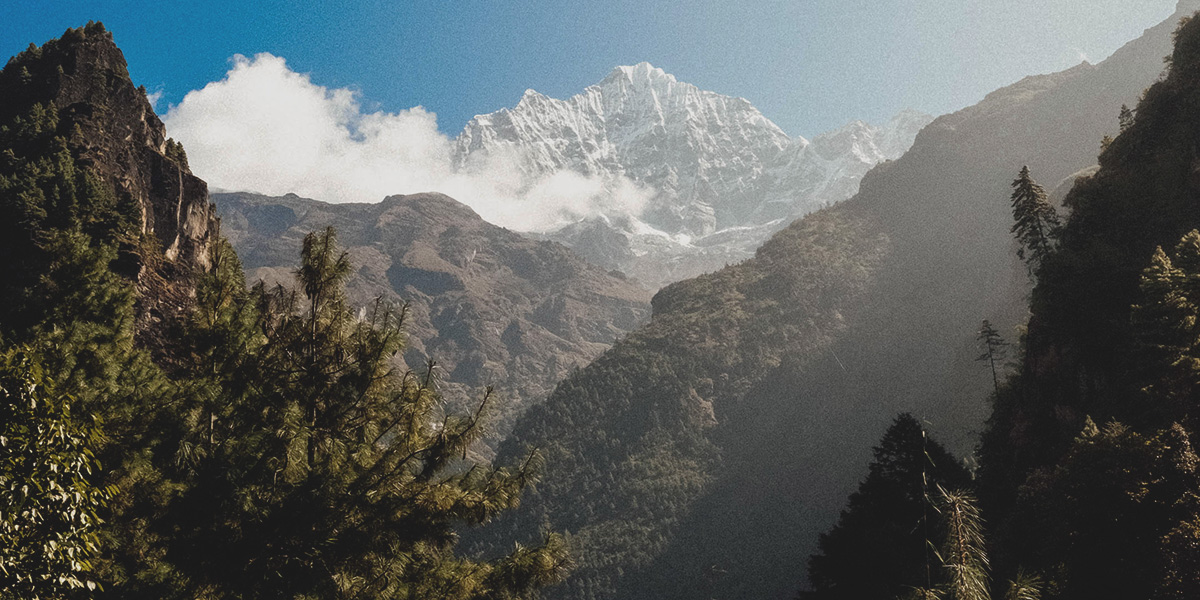
Teahouses are the most popular and best form of accommodation in the Everest region. Tea House trek, as it is aptly named, involves trekking for a couple of hours ( 5 to 7 hours) in a day and staying overnight at a tea house along the route. A typical tea house provides all the basic amenities needed for a trekker for a comfortable stay.
These accommodations usually consist of simple rooms with twin beds, basic bedding, and shared bathroom facilities. Dining areas in the tea houses serve a variety of meals, including both local and international dishes. Electricity is often available for charging devices, but it might come with an additional cost. Please note that bathrooms in most of the teahouses are usually communal. We have a comprehensive blog on accommodation along the EBC route.
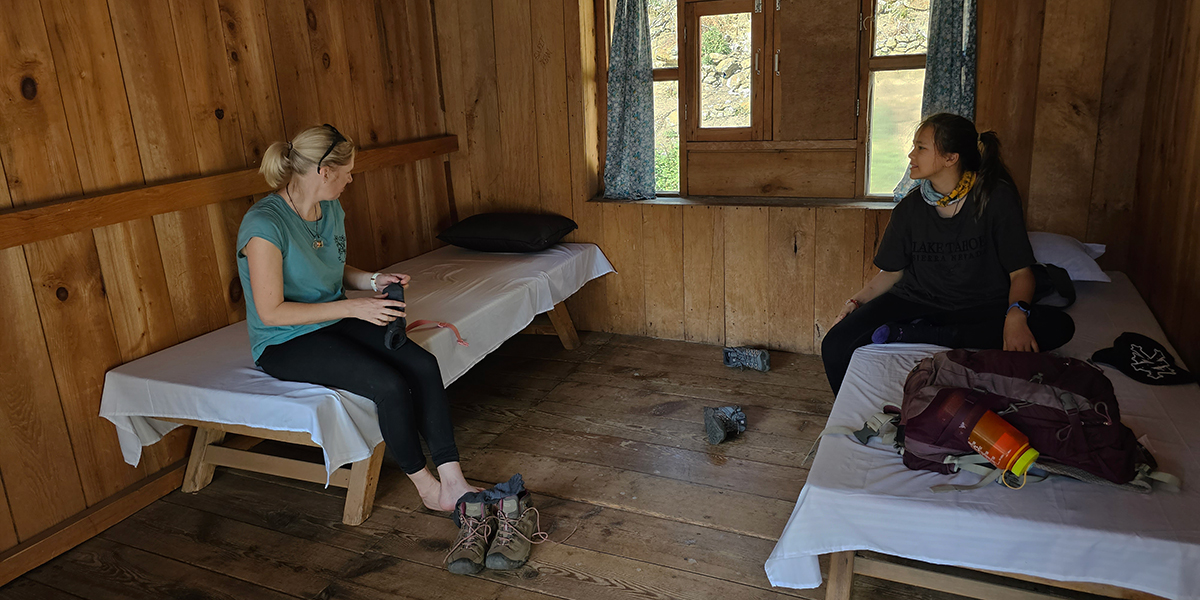
Hands down, Dal Bhat is the best choice for the EBC trek in Nepal. That said, there is a wide array of food options, and the local cuisine primarily centers around rice, noodles, and potatoes, reflecting the staple crops of the region. Dal Bhat is a popular choice among trekkers, consisting of rice and lentil soup, accompanied by various vegetable and potato curries. Noodles and pasta dishes are common, typically served with local vegetables and sauces. Local Sherpa communities often consume hearty vegetarian fare, emphasizing lentils, grains, and vegetables. It’s advisable to refrain from consuming meat while trekking to Everest Base Camp. Again, we have this amazing blog on meal along the route to EBC trek. Have a look!

Yes. During the Everest Base Camp Trek, especially in the lower elevations and some villages along the trail, you might find intermittent phone coverage and limited access to Wi-Fi. However, as you ascend higher into the mountains, especially beyond Namche Bazaar, network availability becomes scarce. You will have to pay for Wi-Fi service and it’s usually around 5$ per hour. The good news is that you can buy unlimited Wi-Fi coverage in certain villages like Lukla. And some hotels (With a “free Wi-Fi” sign) offer free Wi-Fi services to trekkers. Telecommunication companies like NCell have offered 3G connectivity on the Everest Base Camp Trek. However, reliable connection and service is never guaranteed.
Packing for the Everest Base Camp trek is definitely the exciting part. But, you should not over-pack or miss something that can invite discomfort and challenges while trekking. That is why you should pack the best you can. While there is an ultimate packing list for Everest Base Camp trek, it can vary from person to person and time of the year. You can start with clothing. If you’re heading during the autumn and spring season, this blog should help you. And if it’s winter, you better carry an extra layer of clothes. Don’t forget sturdy, broken-in hiking boots and extra socks for comfort.
Additionally, a first aid kit, including altitude sickness medication, water purification tablets, and sunscreen, is indispensable. Packing toiletries like biodegradable soap, wet wipes, and a quick-dry towel is convenient, and a lightweight, compact travel towel can be a space-saver. Bring a portable charger for your electronic devices but be mindful of limited charging opportunities. And yes, please bring back the trash with you when descending to Lukla and Kathmandu.
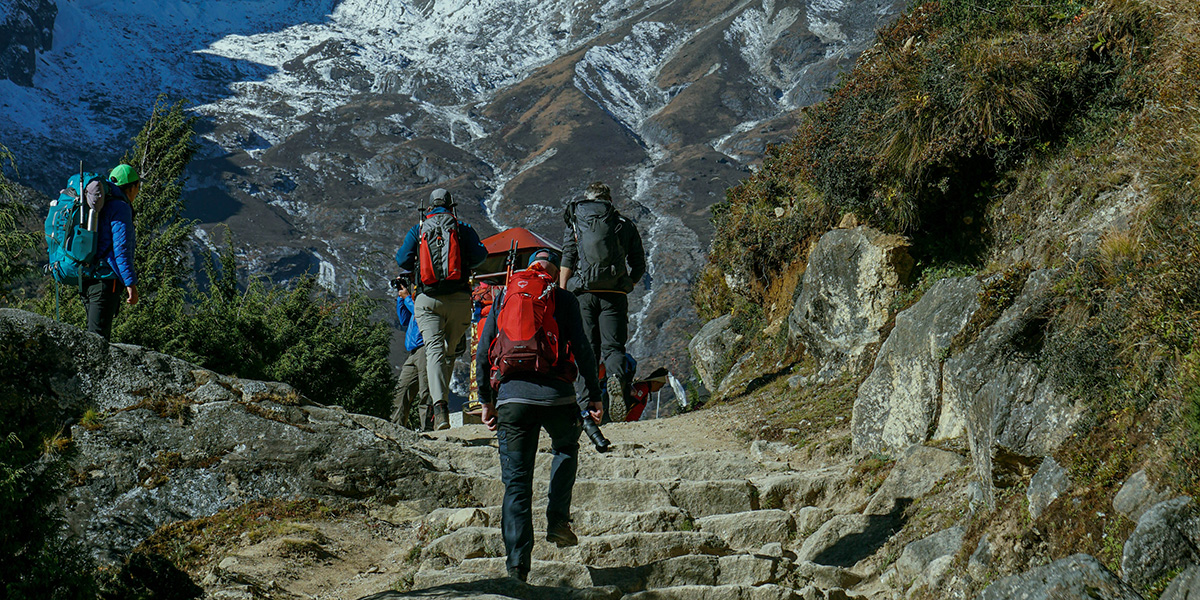
Yes, you need a licensed guide for the trek to EBC. The rule mandating the necessity of a guide for the Everest Base Camp trek is ostensibly in existence, but its implementation appears to be non-existent. As of April 1, 2023, the Nepalese government has implemented revised regulations, requiring all travelers to Everest Base Camp to be accompanied by a professional guide, making independent trekking to the EBC no longer permissible.
In recent weeks, many trekkers exclaim that they have witnessed numerous trekkers navigating the EBC trek route without a guide. It’s always good to go with a guide and porter for the obvious reason that you will have someone to assist and guide you, and not to mention you will help the local community directly. It is advisable to consult with travel experts and fellow travelers regarding the solo trek to EBC.
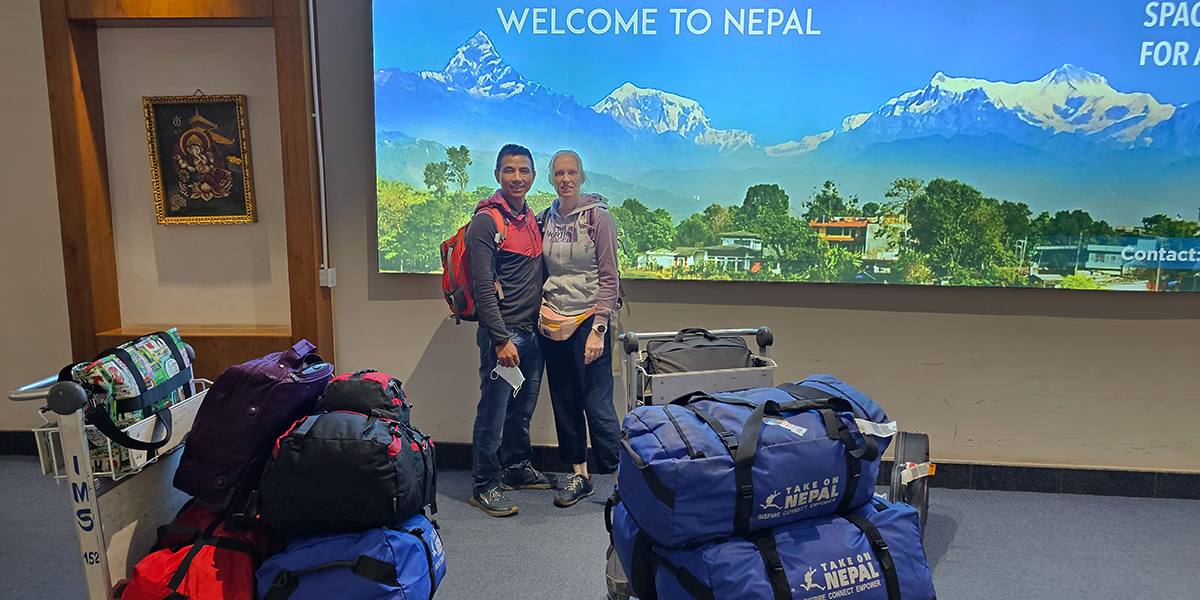
The cost of the Everest Base Camp trek can vary significantly based on multiple factors, including the route taken, duration of the trek, services chosen, and the trekking agency. On average, the 14-day EBC trek can cost anywhere between $ 2,500 and $ 4,000. This estimated cost covers accommodation, food, permits, and guide/porter, excluding personal and miscellaneous expenses. For a luxury itinerary, it would cost more. Our all-inclusive EBC trek cost starts from $2,750 AUD per person .
Yes, you need permits to trek to Everest Base Camp. A new permit system- Khumbu Pasang Lhamu Rural Municipality Entrance Permit- has been implemented recently and you no longer require TIMS card. The cost of this permit is RS 2000 (approximately 23 AUD) per person. Please note that this permit can only be collected from Lukla, not Kathmandu. The other permit you need is Sagarmatha National Park Entry Permit, which costs RS. 3000 (approximately 35 AUD) per person. You can collect it either from Kathmandu at the Nepal Tourism Board or at the Park Entrance Gate at Monjo. The cost of these permits is different for foreigners from SAARC countries, Indian citizens and Westerners.

Now, this is something so important to consider while doing the EBC trek. To trek sustainably and embrace an environmentally friendly approach during the Everest Base Camp trek, several mindful practices can be adopted. First and foremost, a “Leave No Trace” ethos should be upheld; you must bring back the trash. Our guide will always emphasize it. This includes properly disposing of waste, carrying out all non-biodegradable items, and respecting local customs and environments.
Avoid buying single-use plastic and opt for reusable water bottles. You can choose to stay at teahouses that prioritize eco-friendly practices, such as using solar power or minimizing water and energy consumption. Embracing local culture respectfully and supporting local economies by purchasing locally made goods also contributes to sustainable tourism. You can do all these at your personal level and encourage fellow travelers to practice sustainable tourism.
Most trekkers choose the flight from Kathmandu to Lukla as it is the most popular option for EBC trek. But, few consider a classic walk from Jiri, and Phaplu, and even fewer opt for 1-hour heli ride. The walk is suitable for those who have enough days, usually 18- 21 days. The flight to Lukla takes around 30-40 minutes, offering spectacular views of the Himalayas, including the mighty Everest. The EBC trek officially begins from the town of Lukla, the main gateway to the Everest region. It serves as the starting point for most trekkers heading to the Everest Base Camp.

It’s not mandatory to tip, but it is customary or commonly practiced culture in Nepal. It’s a way to show appreciation and gratitude for their outstanding service. Generally, you are expected to tip 10-15% of the total trek cost for guides and about 5-10% for porters. For example, if you paid $2,000 for your trekking experience, $200 would be a kind and respectful amount to pay to your team. You can always discuss tipping directly with the trekking agency or service provider. Remember that while gifts or items might be well-intended, handing over cash would be the best. Should you be confused, check this blog on how much money should I tip to guide and porter.
Trekking to Everest Base Camp is generally safe, but it’s essential to be well-prepared to ensure a safe and enjoyable journey. The good news is that there are rarely any death news or records on the Everest Base Camp trek. If you are physically fit and mentally prepared, you can do this trek. Altitude sickness is a significant consideration due to the high elevations. To mitigate this risk, it’s crucial to acclimatize properly, stay well-hydrated, and ascend gradually. It’s equally important to be prepared for the unpredictable weather condition in the Himalayas. To further assure safety, use safe-and-standard trekking procedures such as staying on marked trails, booking reputable lodging, and carrying the necessary equipment.

Firstly, you must be physically fit and ready for the adventure to the base camp of the highest mountain in the world. Engage in a progressive training routine for at least 2 months before the trek. Your training should incorporate cardiovascular exercises like running and strength training to prepare muscles for the trek through rugged terrains. You must be mentally prepared for challenging days, varying weather conditions, and high altitudes. Acclimatization is another crucial aspect of preparation. During the trek, follow a gradual ascent approach, stay hydrated, and maintain a steady pace. The best rule is to listen to your body and act accordingly. And remember to pack the right gear and clothes.
There are a huge number of companies offering treks in Nepal, and finding the right people can be daunting. You can always look for a trekking company with proven track records and positive reviews. You can also seek recommendations from friends, fellow travelers and travel communities. At Take on Nepal, we believe that taking a strong ethical approach to all that we do will result in a positive outcome for our clients. Because we take genuine care and interest in all of our team members, this results in a happy team that provides an authentic and meaningful experience for all of our trekkers. Our company stands out as a premier choice, backed by a flawless record of five-star reviews and strong recommendations, reflecting our commitment to excellence and customer satisfaction.
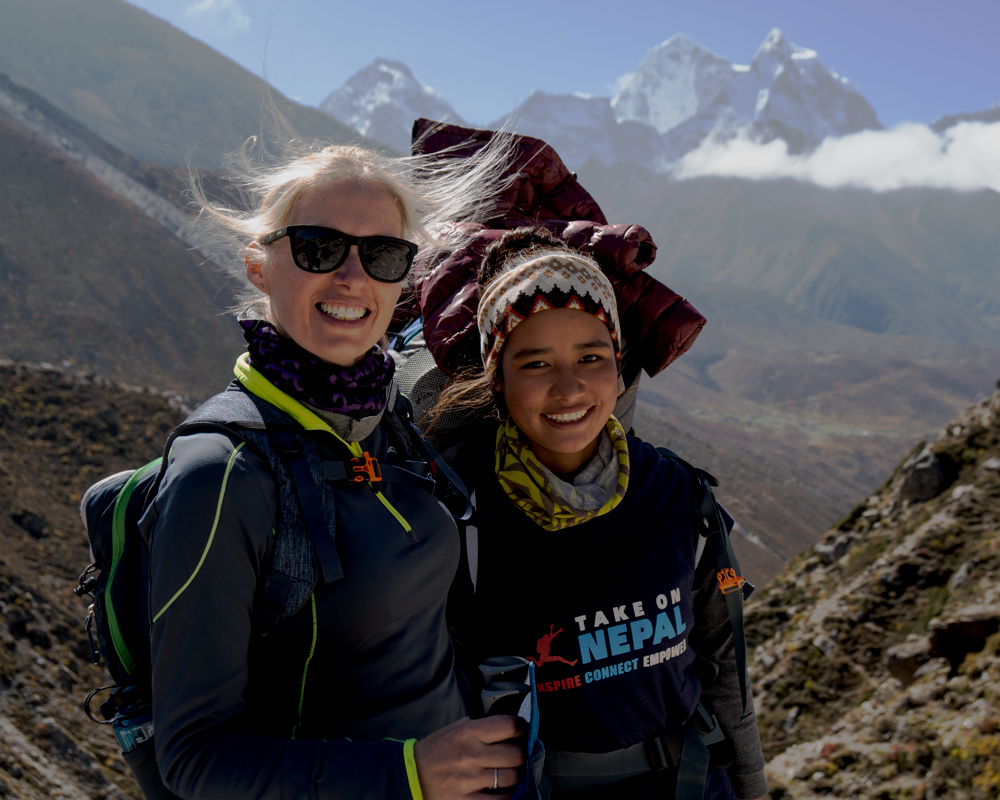
While there are many blogs on “What to pack for the Everest Base Camp trek”, you may find it hard to find blogs on what not to carry. Like mentioned earlier, you should never over-pack or under-pack. So, what should you not take to EBC trek? Starting with unnecessary electronics, it is advisable not to carry extra electronic devices for weight consideration. It’s around 14 14-day trek, so don’t hesitate to leave an extra layer of clothes at home. If you are comfortable with 3 pairs of clothes, why carry the 4th one? You should also consider omitting heavy or excessive toiletries and makeup items. If you have a light and a slightly heavier sleeping bag, consider taking a light one, as teahouses usually provide bedding.
Nestled in the heart of the Khumbu region of northeast Nepal, the popular Everest Base Camp stands at 5,364 meters (17,598 feet). Precisely, it rests at an approximate latitude of 27.9881° N and longitude of 86.9250° E. To reach there, trekkers fly to Lukla from Kathmandu and trek upward to villages like Namche Bazaar, Tengboche, Dingboche, Gorakshep, before eventually reaching the base camp.
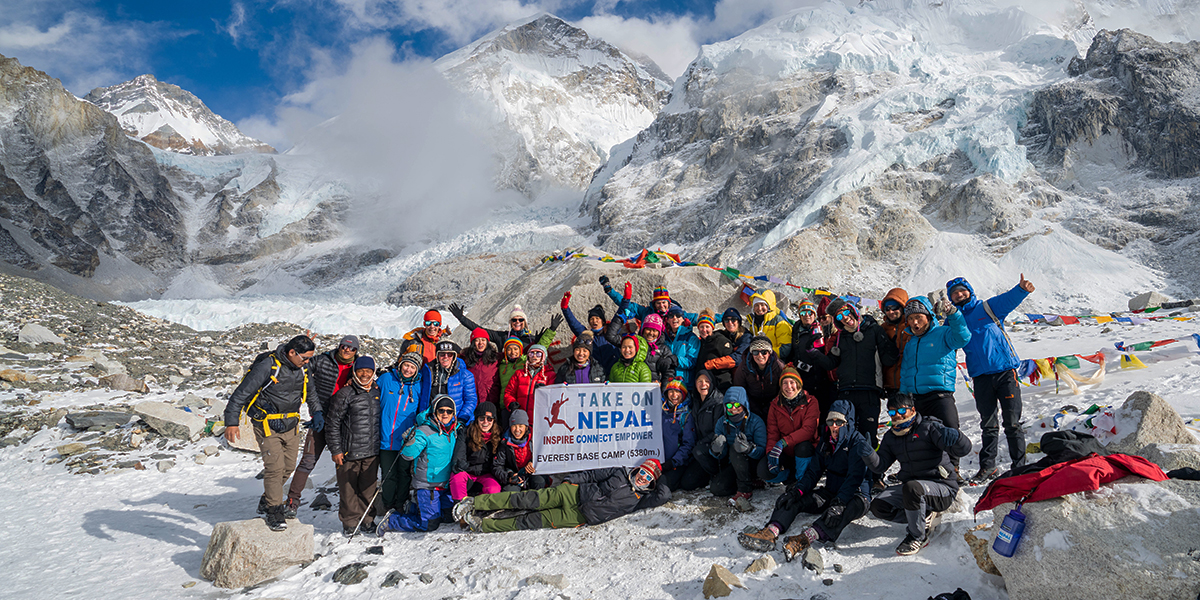
Everest Base Camp’s (EBC) history is entwined with the amazing tale of human exploration and the unwavering quest to ascend Mount Everest, the highest peak in the world. The first recognized exploration of the Everest region can be attributed to the British exploration team led by George Mallory and Andrew Irvine in the early 1920s. Over the decades, thousands of trekkers from around the world put their feet on the Everest Base Camp as an achievement. And today, every year, more than 35000 trekkers embark on a journey to Everest Base Camp. When Sir Edmund Hillary and Tenzing Norgay successfully ascended Mount Everest in 1953, it was one of the biggest turning points in history.
Here’s a brief history of Everest Base Camp:

The Sherpa people are an indigenous ethnic group who primarily reside in the Everest region of Nepal, particularly in Solukhumbu. That said, you can also find other ethnic groups like Rai, Tamang and Gurung, among others. Sherpa people are known for their mountain-dwelling lifestyle and their remarkable skills in mountaineering. They have their own language, traditions, and rituals and are of Tibetan descent.
The Sherpas, who were accustomed to the demanding high-altitude climate of the Himalayas, have traditionally worked in agriculture, trading, and herding. One of the most notable aspects of the Sherpas is their historical involvement in assisting mountaineering expeditions, acting as guides, porters, and climbers. For their mountaineering prowess, resilience and expertise, they are an integral part of the mountaineering community.